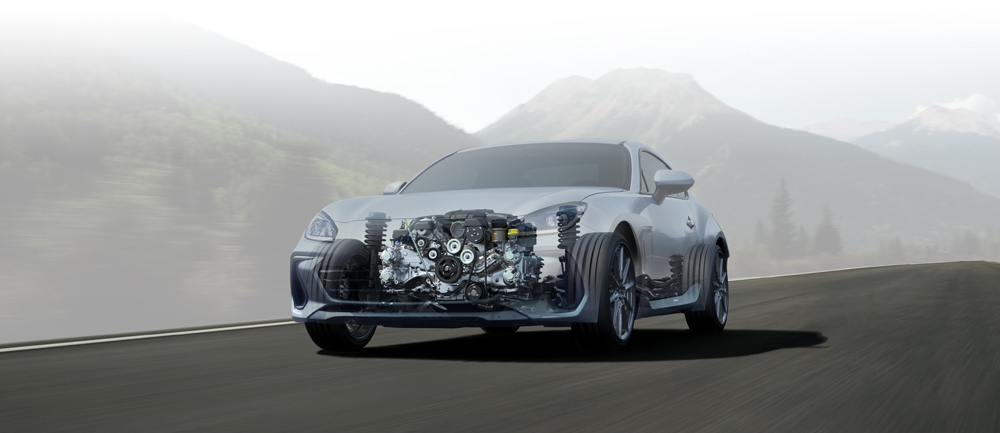How much did the engineers who developed the Subaru 1000 know about the potential of the horizontally opposed engine? With the help of Subaru-Philosophy.com, we can go back in time and find out what led to using this design.
Shinroku Momose, who was the automobile design leader for Subaru in the 60s, told designers that the engine for their up-coming Four-Wheel Drive sedan could be any type so long as it satisfied the following five conditions.
- Since the vehicle is Four-Wheel Drive, locate the deferential gear in the center of the car body in order to make the drive shaft operating angle as small as possible.
- Since the locations of pedals are decided to make driving easy for the driver, these cannot be changed.
- The engine height has to be low in order to keep the center of gravity down and increase the degree of flexibility in body design.
- Since the vehicle is Four-Wheel Drive, the front overhang needs to be shortened.
- Vibration should be reduced in order to enhance the ride quality.
“Mr. Momose was not fussy about the type of engine. Since top priority is given to the people riding the vehicle, he presented the required dimensions and performance and said that any type of engine would suffice providing that the engine and mission met those conditions. We generated all the ideas we could think of and eventually narrowed these down to three possible plans.”
Based on the required conditions that were presented by Momose, the engine design department proposed three engine types, namely the transversely mounted in-line four-cylinder engine, the longitudinally mounted V-type four-cylinder engine, and the transversely mounted horizontally opposed four-cylinder Boxer engine.
Because the drive shafts could be equal in length and also made longer, the Boxer Engine and transmission layout seemed to be the optimal choice for evenly distributing power. At the time, the greatest development problem for Four-Wheel Drive was the drive shaft joints. Development of the horizontally opposed engine began and the first engine to be designed was an 800 cc 36 HP Boxer engine. Based on that engine, a 796 cc, 41 HP prototype was manufactured. This was subsequently bumped up to a 923 cc, 46 HP model then a 977 cc, 47 HP model, and finally the EA-52 Boxer Engine 977 cc, 55 HP model was developed for mass production.
Producing Boxer Engines proved to be an expensive endeavor at first and engineers and executives alike frequently questioned choosing it. However, the advantages that the horizontally-opposed engine granted their Four-Wheel Drive system were clear and Subaru believed that these elements would help their product stand out and sell well. The balance, lower vibrations created, and the optimal layout provided to their drivetrain hit home with their philosophy of "Unity" (Subaru's namesake). Each part working together to enhance and make use of their abilities to come together and make something great.



No comments:
Post a Comment